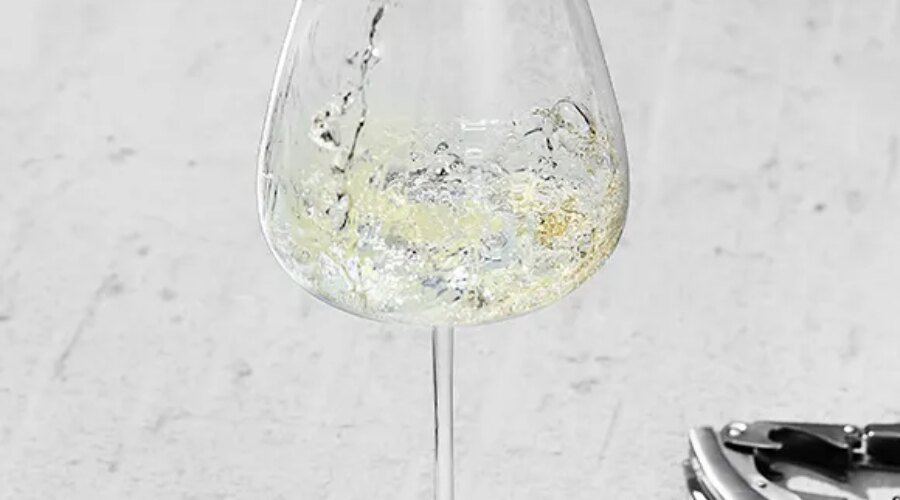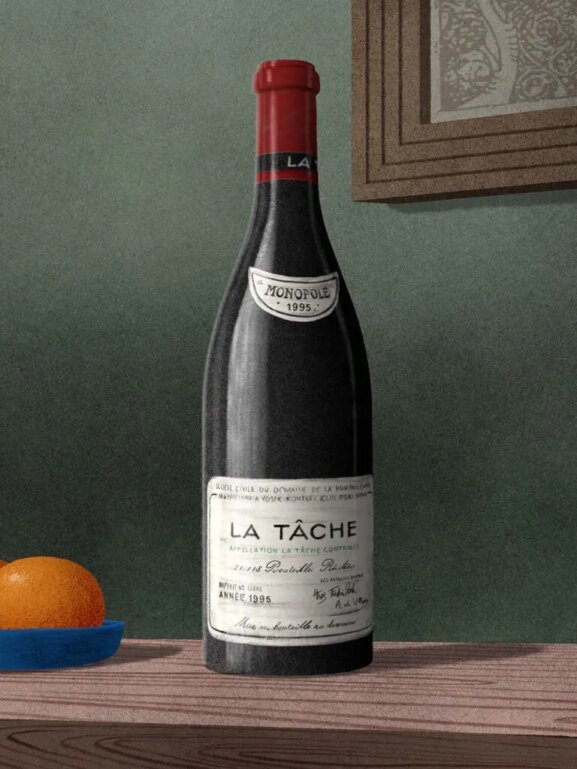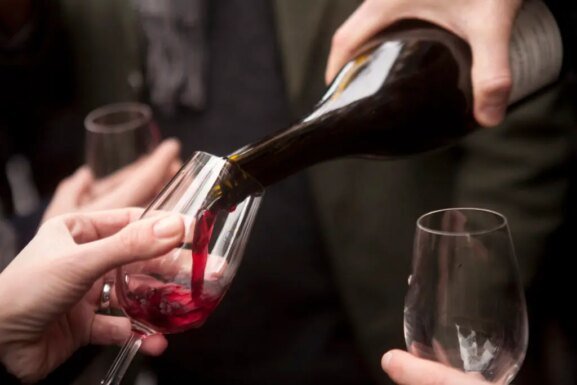How Can Wine Be ‘Floral’? We Explain
When a wine is described as having “floral” notes, it can conjure up images of a winemaker tossing a bouquet of roses and lilacs into the barrel during production. Let me assure you: that is not the case. These delightful aromas and flavors in wine come from the grape itself. The term is used to describe those delicate, perfumed notes that remind us of blossoms in full bloom or dried-out rose petals. These aromas can range from the heavenly scent of a lavender field to the subtle lift of violets, lilacs, orange blossom, or even chamomile.
While “floral” often sounds poetic, there’s real science behind why certain wines smell like flowers and how winemakers coax and even tame these aromas.
Grapes and Regions Where Floral Aromas Shine
Different grape varieties have naturally higher levels of aromatic compounds that give rise to floral notes. Viognier from France’s Northern Rhône often bursts with orange blossom and honeysuckle, while Muscat—found everywhere from Italy to Greece—delivers pleasantly floral aromas of jasmine, rose, and elderflower. Gewürztraminer from Alsace is unmistakable with its rose petal and lychee perfume, and Argentina’s signature white, Torrontés, can smell like walking through a spring garden of jasmine and lilies.
But white wines aren’t the only ones that can exude those floral aromas and flavors. Pinot Noir, particularly from Burgundy or Oregon, can show a delicate violet or lilac lift, while Nebbiolo from Piedmont is famously laced with dried rose petals. Even Syrah, especially in cooler regions like the Northern Rhône, may offer subtle lavender notes alongside its classic pepper and dark fruit. These floral signatures often act as a hallmark of the grape and the place it’s grown.
The Science of Grape Aromas
The answer lies in the grape itself. Compounds called terpenes are the primary drivers of floral aromas. Found in the skins and pulp, terpenes are the same natural aromatic molecules that give essential oils their fragrance. Linalool, for example, is responsible for the lavender and citrus-blossom notes in Muscat and Gewürztraminer, while geraniol contributes to the rose petal character in Torrontés and Nebbiolo. Yep, there’s a whole lot of science behind these enchanting floral characteristics.
// Create the element
var script_68f148800ef85 = document.createElement(“script”);
script_68f148800ef85.innerHTML = `
window.googletag = window.googletag || {cmd: []};
googletag.cmd.push(function() {
var adType = “leaderboard”;
var mapping;
var lbmapping = googletag.sizeMapping()
.addSize([1024, 0], [[970, 250], [970, 90], [1, 1], [728, 90]])
.addSize([728, 0], [[728, 90], [1, 1]])
.addSize([320, 0], [[1, 1], [300, 50], [300, 100], [320, 50], [320, 100]])
.addSize([0, 0], [[1, 1], [320, 50]])
.build();; // Size mapping for leaderboard ads
var medrecmapping = googletag.sizeMapping()
.addSize([1024, 0], [[300, 600],[300, 250]])
.addSize([728, 0], [300, 250])
.addSize([320, 0], [[1, 1],[300, 250]])
.addSize([0, 0], [[1, 1], [300, 250]])
.build(); // Size mapping for med rectengle ads
if(‘/39808611/article_page/article_leaderboard_1’ == ‘/39808611/article_page/article_leaderboard_1’
|| ‘/39808611/article_page/article_leaderboard_1’ == ‘/39808611/article_page/article_leaderboard_2’
|| ‘/39808611/article_page/article_leaderboard_1’ == ‘/39808611/article_page/article_leaderboard_3’) {
mapping = googletag.sizeMapping()
.addSize([1920, 0], [[728, 90]]) // >= 1920px
.addSize([1440, 0], [[728, 90]]) // 1440px-1919px
.addSize([730, 0], [[300, 250]]) // 730px-1439px
.addSize([0, 0], [[320, 100], [320, 50], [300, 100], [300, 50], [300, 250]]) // Up to 729px
.build();
} else {
mapping = adType == ‘leaderboard’ ? lbmapping : medrecmapping;
}
googletag.defineSlot(‘/39808611/article_page/article_leaderboard_1’, [],
‘div-gpt-ad-68f148800ef85’).addService(googletag.pubads()).defineSizeMapping(mapping);
googletag.pubads().enableSingleRequest();
googletag.pubads().collapseEmptyDivs();
googletag.display(‘div-gpt-ad-68f148800ef85’);
});
`;
// Append the script to the body
document.body.appendChild(script_68f148800ef85);
The concentration of these compounds depends on the grape variety, but factors like vineyard altitude, climate, and ripeness at harvest can intensify or soften their expression. Cooler climates often help preserve these delicate aromatics, while excessive heat can push them into that potential overripe and/or tropical territory.
Winemaking and the Floral Spectrum
Once the grapes arrive at the winery, decisions made by the winemaker determine how much of those floral notes make it into your glass. Gentle pressing and cool fermentation in stainless steel tanks help protect terpenes and showcase their vibrancy. Using neutral oak—or avoiding oak altogether—allows those floral notes to shine without being masked by toast or spice.
On the other hand, extended skin contact or heavy new oak can overwhelm or even mute floral aromatics, replacing them with bolder fruit, spice, or earthy characteristics. Some winemakers also choose specific yeast strains that enhance floral expression, essentially amplifying what nature has already provided.
The Beauty of Flowers
Floral aromas can transform a wine from basic and simple to sublime and sexy. They add a sense of lift, elegance, and complexity that invites you back to the glass again and again.
// Create the element
var script_68f148800f719 = document.createElement(“script”);
script_68f148800f719.innerHTML = `
window.googletag = window.googletag || {cmd: []};
googletag.cmd.push(function() {
var adType = “leaderboard”;
var mapping;
var lbmapping = googletag.sizeMapping()
.addSize([1024, 0], [[970, 250], [970, 90], [1, 1], [728, 90]])
.addSize([728, 0], [[728, 90], [1, 1]])
.addSize([320, 0], [[1, 1], [300, 50], [300, 100], [320, 50], [320, 100]])
.addSize([0, 0], [[1, 1], [320, 50]])
.build();; // Size mapping for leaderboard ads
var medrecmapping = googletag.sizeMapping()
.addSize([1024, 0], [[300, 600],[300, 250]])
.addSize([728, 0], [300, 250])
.addSize([320, 0], [[1, 1],[300, 250]])
.addSize([0, 0], [[1, 1], [300, 250]])
.build(); // Size mapping for med rectengle ads
if(‘/39808611/article_page/article_leaderboard_2’ == ‘/39808611/article_page/article_leaderboard_1’
|| ‘/39808611/article_page/article_leaderboard_2’ == ‘/39808611/article_page/article_leaderboard_2’
|| ‘/39808611/article_page/article_leaderboard_2’ == ‘/39808611/article_page/article_leaderboard_3’) {
mapping = googletag.sizeMapping()
.addSize([1920, 0], [[728, 90]]) // >= 1920px
.addSize([1440, 0], [[728, 90]]) // 1440px-1919px
.addSize([730, 0], [[300, 250]]) // 730px-1439px
.addSize([0, 0], [[320, 100], [320, 50], [300, 100], [300, 50], [300, 250]]) // Up to 729px
.build();
} else {
mapping = adType == ‘leaderboard’ ? lbmapping : medrecmapping;
}
googletag.defineSlot(‘/39808611/article_page/article_leaderboard_2’, [],
‘div-gpt-ad-68f148800f719’).addService(googletag.pubads()).defineSizeMapping(mapping);
googletag.pubads().enableSingleRequest();
googletag.pubads().collapseEmptyDivs();
googletag.display(‘div-gpt-ad-68f148800f719’);
});
`;
// Append the script to the body
document.body.appendChild(script_68f148800f719);
Whether it’s the orange blossom charm of Viognier, the rose petal allure of Nebbiolo, or the violet delicacy of Pinot Noir, these scents remind us that wine isn’t just fermented grape juice—it’s a sensory bridge to the natural world.So next time you pour a glass, pause for a moment. Swirl, sniff, and see if you can catch a trace of flowers in bloom. It might just be the most enchanting part of that wine tasting experience.
More Wine Terms Coverage
- Want to know what “jammy” really means in wine?
- It’s time we stop calling wine “masculine” and “feminine.”
- Looking for a “crisp” wine? Here’s what that actually means.
- Not all “reserve” wines are created equal.
- Ever hear the term “international varieties” and wonder what it means? We’ve got you covered.
From the Shop
Find Your Wine a Home
Our selection of white wine glasses is the best way to enjoy the wine’s subtle aromas and bright flavors.
The post How Can Wine Be ‘Floral’? We Explain appeared first on Wine Enthusiast.


